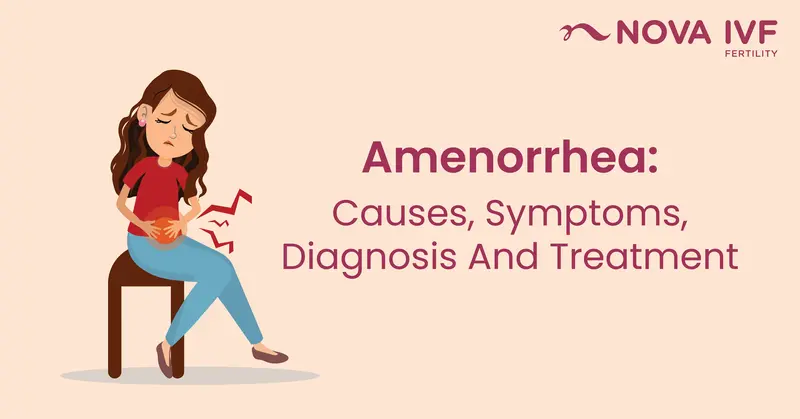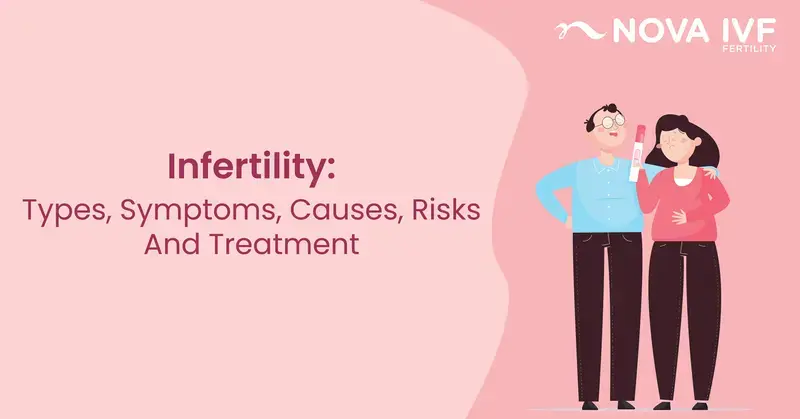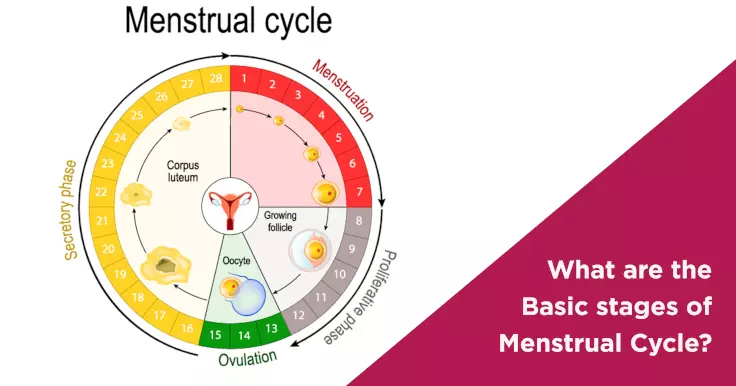Amenorrhea

Amenorrhea is a condition found in women of reproductive age wherein they are affected by the absence of menstruation. There are various causes of amenorrhea, such as lifestyle habits, eating disorders, congenital defects, reproductive organ failure, excessive workouts, psychiatric abnormalities, etc. The treatment of this medical condition depends upon its cause. Surgery, lifestyle changes, medications, etc. are some of the common treatments used for amenorrhea.
In this article, we will discuss the various symptoms caused by amenorrhea.
Amenorrhea Overview
Amenorrhea is a medical condition in which a woman of reproductive age fails to menstruate. Any interruption in the normal hormonal cycle of the body due to various reasons can lead to amenorrhea. Women do not get their periods either during pregnancy, breastfeeding, or post-menopause. Apart from these reasons, if still, a women’s menstruations are absent, then she may have amenorrhea.
For a woman to menstruate normally, her hypothalamus, pituitary gland, ovaries, uterus, cervix, and vagina should function properly and have normal anatomy. Anything that hampers the functioning of these organs or parts of a female body can cause amenorrhea.
There are two types of amenorrhea:
Primary amenorrhea
Primary amenorrhoea is defined as an absence of secondary sexual characteristics (such as enlarged breasts and pubic hair) by age 14 with no menarche (first period) or normal secondary sexual characteristics but no menarche by 16 years of age.
Secondary amenorrhea
When a woman who has experienced menstrual periods previously but stops menstruating for more than three months. In women who have menstruated previously, secondary amenorrhea can lead to the absence of menses for an interval of time equivalent to a total of at least 3 previous cycles, or 6 months.
Amenorrhea Causes
Amenorrhoea is merely a symptom and not the actual problem with various potential causes which need to be identified and treated.
Amenorrhea can be caused by a number of reasons; amenorrhea causes may vary depending on its type. The natural reasons such as pregnancy, breastfeeding, and menopause, are completely normal. Contraceptive pills or IUD may also cause one to have a few episodes of no periods due to cycle suppression. Apart from these reasons, if a woman experiences amenorrhea, then it could be a sign of a medical problem or side-effect of some other medications.
Causes of Primary Amenorrhea
- A genetic disorder such as turner’s syndrome can hinder normal sexual maturation in girls
- Hyperandrogenism or high levels of male hormones in girls can interrupt the menstruation
- Anatomical abnormalities such as
- Mullerian defects wherein the uterus and Fallopian tubes may be missing or not formed correctly.
- Intrauterine adhesion
- The Mayer-Rokitansky-Kuster Hauser (MRKH) syndrome in which there is no vaginal opening
Causes of Secondary Amenorrhea
- Low body weight or low body mass index (below 19) can interrupt the normal hormonal functioning. This can happen to women with an eating disorder such as anorexia or bulimia.
- Medications used for cancer, blood pressure, allergy, depression, anxiety, psychosis, etc.
- Excessive exercises can affect the menstrual cycles due to loss of body fat and over expenditure of energy
- Extreme stress can interfere with the brain's hormonal signals to the ovaries
- Use of drugs can hamper the hormonal cycles and use of alcohol lead to malnutrition
- Premature menopause happens due to low ovarian reserves in women, as a result, the menstruation stops
- Asherman’s syndrome or uterine scarring caused due to a C-section, D&C or some other treatment can lead to building up of the scar tissues in the uterine lining
- Hormonal imbalance in the body due to an overactive thyroid gland, PCOS, or a pituitary tumour
- Stopping the use of birth control medication
- Depression
Some of the physiological or natural causes of amenorrhea include:
- Pregnancy
- Breastfeeding (Lactational amenorrhoea)
- Menopause
Risk Factors in Amenorrhea
There are various factors that can put one at the risk of developing amenorrhea, some of them include the following:
- Eating disorder: People with eating disorders such as anorexia nervosa or bulimia are more prone to amenorrhea due to lack of body fat and other problems.
- Family history: If a woman has cases of amenorrhea or early menopause, then there are chances that she may get amenorrhea too.
- Excessive exercise: Strenuous exercises and rigorous athletic training can easily put one at amenorrhea risk.
- Genetics: Change in the FMR1 gene, which also causes Fragile X syndrome, can lead to amenorrhea.
- Ovarian failure: Due to receiving chemotherapy and radiotherapy, females of reproductive age can develop amenorrhea.
- Structural abnormalities: Girls who have congenital abnormalities such as poorly developed genital and pelvic organs can be at the risk of developing amenorrhea.
If you manage to control these risk factors, such as exercise in moderation, eat a healthy, balanced meal, and mange stress levels, you may be able to prevent amenorrhea. However, doing these does not guarantee that you won’t develop amenorrhea.
Amenorrhea Symptoms and Related Conditions
Listed below are the common amenorrhea symptoms:
- Absence of menstruation
- Lack of breast development
- Facial hairs
- Vaginal dryness
- Galactorrhea or milky discharge from nipples
Depending upon the cause of amenorrhea following symptoms may also appear:
- Milky discharge from the nipple or galactorrhea in women who are not pregnant or breastfeeding.
- Hair loss
- Weight gain or weight loss
- Increased facial and body hair growth or hirsutism due to excessive male hormones
- Due to reproductive organ failures, insomnia, vaginal dryness, or night sweats can be seen
- Changes in vision or headaches
- Acne
- Pelvic pain
- Lack of breast development
Amenorrhea can be a symptom of infertility as well. Thus, it is important to ask your doctor for a differential diagnosis for amenorrhea as well.
Amenorrhea Diagnosis
The basic requirement for normal menstrual function includes four anatomically and functionally distinct structural components—the genital outflow tract (uterus and vagina), ovary, pituitary, and hypothalamus—thus providing a natural hierarchy for organising the diagnostic evaluation of amenorrhea.
Disorders of the genital outflow tract and uterus:
- Imperforate hymen
- Transverse vaginal septum
- Cervical atresia/stenosis
- Mullerian agenesis
- Androgen insensitivity syndrome
- Asherman syndrome
Disorders of the Ovary:
- Gonadal dysgenesis
- Turners Syndrome
- Swyers Syndrome
- Premature ovarian failure
- Disorders of the pituitary
- Pituitary tumours
- Empty sella syndrome
- Sheehan syndrome
Disorders of Hypothalamic function:
- Hypothalamic amenorrhea
- Eating disorders
- Anorexia nervosa
- Bulimia Nervosa
- Exercise induced amenorrhea
- Congenital GnRH deficiency
The evaluation of primary amenorrhea is done at these levels:
- Detailed history along with family history
- Physical examination
- Ultrasonography
- MRI pelvis
- Hormonal evaluation - FSH, LH, Estradiol
- Karyotyping
- Fragile X mutations
- Autoimmune screening
- TSH and prolactin levels
- MRI brain
- BHCG for pregnancy
It has to be remembered that all investigations will not be done in all who present with amenorrhea. The sequence of investigations will be guided based on the history and physical examination.
Amenorrhea Treatment Options
The treatment strategies used for curing amenorrhea depends upon its cause. In the case of primary amenorrhea caused due to delayed puberty, the doctor may suggest waiting as the girl would eventually attain menarche in constitutional delay. This is usually associated with family history of delayed menstruation. Some women consider amenorrhea ayurvedic treatments first before trying out allopathic treatment.
Primary amenorrhea caused by genetic problems such as ovarian failure may require medications to balance the hormonal levels and enhance the pubic hair, breast development and other secondary sexual characteristics. Primary amenorrhea caused due to structural and congenital issues may need surgery. Surgery is useful in cases of structural defects like vaginal septum, imperforate hymen, cervical stenosis. In some cases of structural defects, like absence of the uterus, the treatment is directed at maintaining the oestrogen levels normal so as to allow for normal functioning of the body and not for resuming menstrual function. The reproductive options of women with absent uterus or ovarian failure needs to be discussed so as to make an informed decision about future family plans.
For secondary amenorrhea, the following treatment methods can be used:
- Proper diet and exercise programs: If obesity is causing amenorrhea, then in such cases the doctor will ask the patient to reduce weight by adopting healthy lifestyle habits.
- Stress-management cours: Extreme stress can cause secondary amenorrhea. Enrolling for a stress-management program can help the patient tackle stressful situation with much ease.
- Hormone balancing medications: Doctor may recommend pills to balance the hormones for normal cycles.
- Medication for PCOS symptoms: Patients with PCOS may not ovulate thus causing amenorrhea. The doctor may prescribe medications to trigger ovulation.
- Moderate workout programs: Doctor may ask the patient to notch down her workout routine as extremely strenuous activities can lead to low body fat and hormonal imbalances.
- Estrogen replacement therapy: This therapy replaces the estrogen hormone that should be otherwise produced naturally by the body. This helps in dealing with the symptoms of primary ovarian insufficiency (POI) or Fragile X-associated primary ovarian insufficiency (FXPOI).
- Surgery: The surgical method for treating amenorrhea is rarely used. Tumours or cysts in the ovary, uterus or pituitary gland can also cause amenorrhea. In such cases, sometimes surgery may be required to remove the tumour. Also, if the uterine scarring is stopping the menstruation, then surgery to remove the scar tissues may bring back the normal menstruation.
Amenorrhea and pregnancy—Impact of Amenorrhea on Fertility
Amenorrhea is a symptom of an underlying cause, and the causes of amenorrhea can be varied depending on the cause. Amenorrhea can be caused due to the disorders of the outflow tract (uterus and vagina), ovary and ovulatory disorders, disorder of the pituitary and hypothalamus.
Each of the causes has a different implication in the realm of infertility. In case of the disorders of the outflow tract, these women can have normal or abnormal genital anatomy. In normal genital tract anatomy, the causes include cervical stenosis, ashrams syndrome and endometrial damage. The fertility prospects depend on the extent of the disease as this affects the site of implantation.
In women with abnormal genital tract anatomy, amenorrhea can be associated with obstruction at the level of the vagina which is amenable to treatment and fertility is restored. In women with absent uterus, surrogacy/adoption is the only fertility option available. Uterine transplantation is another option which may be available in the future—it is still in the early stages of development.
Ovarian disorders can be further divided into chronic anovulation (where ovulation does not occur regularly and cyclically) and ovarian failure. In women with chronic anovulation (e.g. PCOS, Thyroid disorders), treatment of the underlying disorder establishes ovulation and then pregnancy.
In women with ovarian failure, which is caused by ovarian dysgenesis, premature ovarian failure, chemotherapy, and radiotherapy, natural conception is difficult as the ovarian reserve is very low or non-existent; donor gametes is an option for pregnancy in such cases.
In pituitary and hypothalamic causes, the ovarian reserve is not affected, fertility is restored upon treatment of the cause of amenorrhea. Hence probability of pregnancy in amenorrhea is dependent on the underlying cause and each individual is evaluated and treated for fertility as per the same.
Community and Support Resources
Learning about your medical condition empowers you to seek help and choose preferred treatment options for yourself. Here are some resources to help you in dealing with amenorrhea:
- National Library of Medicine
- The Federation of Obstetric and gynaecological Societies (FOGS) of India
- Eunice Kennedy Shriver National Institute of Child Health and Human Development (NICHD)
- Study on breast-feeding and lactational amenorrhea
- Current evaluation of amenorrhea by the Practice Committee of the American Society for Reproductive Medicine
- The American College of Obstetricians and Gynaecologists (ACOG)
 Infertility Counselling
Infertility Counselling Female Infertility Treatment
Female Infertility Treatment Andrology Treatment
Andrology Treatment Fertility Enhancing Surgeries - Female
Fertility Enhancing Surgeries - Female Fertility Enhancing Surgeries - Male
Fertility Enhancing Surgeries - Male Endoscopy Treatment
Endoscopy Treatment IUI Treatment
IUI Treatment IVF Treatment
IVF Treatment ICSI Treatment
ICSI Treatment Advanced IVF Solutions
Advanced IVF Solutions Embryology
Embryology Vitrification Egg, Embryo, Sperm Freezing
Vitrification Egg, Embryo, Sperm Freezing Preimplantation Genetic Testing (PGT)
Preimplantation Genetic Testing (PGT) Donation Program Embryo / Egg / Sperm
Donation Program Embryo / Egg / Sperm Self-cycleTM IVF
Self-cycleTM IVF

 Self-cycleTM IVF
Self-cycleTM IVF










